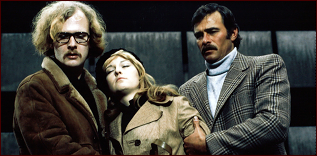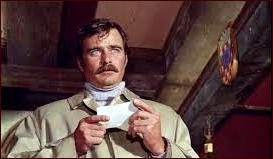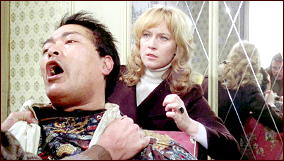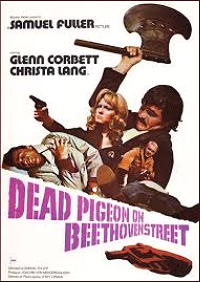Fri 23 Jun 2017
A Science Fiction Movie Review by Jonathan Lewis: THE BOOK OF ELI (2010).
Posted by Steve under Reviews , SF & Fantasy films[4] Comments
THE BOOK OF ELI. Warner Brothers, 2010. Denzel Washington, Gary Oldman, Mila Kunis, Ray Stevenson, Jennifer Beals. Directors: Albert Hughes and Allen Hughes.
I’ve become increasingly convinced that Denzel Washington is the auteur of the films that he appears in. That’s not to say that he doesn’t work with talented directors or that his co-stars aren’t often talented actors themselves. It’s just that Washington is able to portray so many different types of characters who find themselves in nearly impossible situations. In that sense, there is a common thread that runs through a lot of Washington movies. He often portrays a loner, a solitary man whose thoughts run deeper than one might expect.
And you know what? That’s definitely true for his role as the titular character in The Book of Eli. Washington portrays Eli, a man living in post-apocalyptical America. He’s been spending his years walking through the wastelands that were once vital cities and towns, making his way to the West Coast. He’s carrying with him an extremely precious object. One that the audience learns is the last remaining copy of the King James Bible.
As you might expect from what I just mentioned, the Christian symbolism and allegory is overt in this overall gritty feature. Eli is on a mission. One that he thinks is divinely inspired. And that mission involves his traveling on foot, through tough terrain and in the face of violent marauders, all the way to the West Coast so that he can hand over the Bible to people who will make proper use of it.
The greatest obstacle to his completing his mission comes in the form of a would-be tyrant by the name of Carnegie (an over the top Gary Oldman) who wants the Bible in order to consolidate his control over a desperate, illiterate populace.
Fortunately, Eli – a loner at heart – finally allows for companionship in his life, albeit of the platonic variety. Solara (Mila Kunis) is a girl held captive by Carnegie who decides she wants a better life and decides to join Eli on his quest. The two of them face down not only Carnegie and his henchmen, but also a husband and wife whose hospitality toward them may have less to do with kindness than with cannibalism.
While I thoroughly enjoyed watching Washington’s portrayal of Eli, I ended up feeling that the story, while compelling, was just a little too straightforward. The Christian allegory was strong, and the message that the Bible could be used for good or for evil was loud and clear. But it just wasn’t enough to make me feel as though the movie would not have benefited from a greater degree of moral complexity.
One final note: the movie, set as it is in a post-nuclear war America, is filmed in earth tones, almost sepia. Sometimes it works well. Other times, the unique color scheme only serves to draw attention away from the action on hand.



